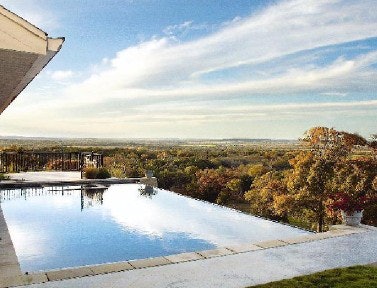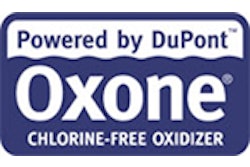
Ask any pool owner if she'd like to spend less money operating her pool by installing a more efficient system, and the answer will be a resounding "yes." No one enjoys spending money unnecessarily on energy bills.
Furthermore, an efficient system tends to be one that preserves pool equipment. "What's critical for builders is the longevity of their equipment," says John Versfelt, owner and president of Southernwind Pools in Dallas. "And in some cases if the pump is improperly installed, it will expire within a couple of months — the motor will actually burn out — if the hydraulics are not properly balanced. And if you put a large pump on a small filter, you're going to have some repairs in a very short period of time, and that's going to translate into a warranty issue and a customer service issue."
Because responsible builders and service technicians aim to properly install high-quality, energy-efficient equipment, AQUA asked a few industry builders and suppliers for tips to make pumps and motors more energy efficient and cost effective — and therefore more durable.
Size It Up
Picking the right pump for the pool is the first step to setting up an efficient system. "If the pump is not sized up properly to the plumbing system, then it will waste electricity," says Steve Gutai, product manager for pumps, filters and valves for Petaluma, Calif.-based Jandy. "If there's too much back pressure on the pump, which means there's too much resistance in the system, the pump will work to the back of its curve, so you'll see higher electrical consumption for lower amounts of flow. The back pressure needs to be relieved or the pump resized.
"If the pump works too much to the front of the curve, meaning that there's not enough back pressure, you will see an increase in electrical consumption and the pump will probably cavitate. In simplistic terms, the goal is to get the proper ratio or balance of the motor's electrical consumption to the pump's best efficiency point for flow and head."
Mike Phillips, vice president for Charlotte, N.C.-based Southern Pools, also believes that specifying the right size pump for the application is the key to an efficient system. But convincing others can be challenging. "One of the biggest battles I try to overcome when I'm talking to customers who are also talking to a competitor, is they think bigger is better. So I'm suggesting an energy-efficient pool with balanced hydraulics and I'm offering a or : horsepower. The other guy is offering a 2 horsepower and there's no need for a 2 horsepower, and the power bill is going to be higher, but people think bigger is better." In this situation, Phillips has to educate his customers so they understand the benefits of the appropriately sized pump.
Versfelt is also aware of the problems associated with a misapplied pump. "If the pump is over sized, it could very well start to cavitate, which means the pump is trying to pull more water than it can get supplied to it. And the same effect would happen on the other side, which means you'd pull more amps, your pump would be less efficient, it would expire quicker and it would be quite loud."
But, of course, the pump is not the only piece of equipment that must be sized correctly — everything must fit together. "For example, you could oversize your pump and filter feeling that you're adequate," says Versfelt. "But if your multi-port valve is not sufficient, the valve can leak, you can identify it as a manufacturer defect, replace it, find that it occurs again and not till then will you realize that you're only repairing a symptom of another problem, which is that your gallons per minute on that valve are not sufficient to take what the pump is supplying. That's definitely something builders can fall into if they aren't careful with understanding their equipment sizes. And that would translate into a motor working a lot harder and consuming a lot more electricity."
Pool Guts
Hydraulics must also be considered as builders specify a pump and other equipment for an application.
"Anything you can do to create a better hydraulic system will help you relative to your flow and how often you have to run the pump," says Rich Garbee, marketing director for Hayward Pool Products, Elizabeth, N.J. "They all marry to each other, so good plumbing configurations, using 2-inch piping and minimizing 90degree angles or bends will lead to a more-efficient system, which will lead to lower energy costs."
Versfelt believes in-floor circulation can also improve system efficiency. "We use A & A Manufacturing, which is the only system that recirculates the filtered and chemically treated water and allows you to heat from the bottom of the pool up. So not only can your consumption of kilowatts be decreased because the efficiency of the circulation system is increased so you can run your pump less and consume less energy, but you can also heat the entire pool 60 to 70 percent cheaper than if you would heat with a traditional plumbing setup."
The Right Spot
Yet another factor contributing to pump, motor and system efficiency is the location of the equipment. "Keep the equipment within a minimum distance from the pool," says Versfelt. "For cosmetic reasons, people don't want it right next to the pool, but a builder is going to want to minimize the distance.
"If you're within 30 or 40 feet of the pool, you're fine. When you start to stretch to 50 to 70 feet, you're having to maximize your pump and filter and you're going to minimize your turnover rate because you've got so much more resistance of flow because of the plumbing. You're going to create more head pressure and your turnover rate is going to be slower, and the turnover rate translates into how long you have to operate it, which translates into how much it costs to operate it."
Proper ventilation is also important. Says Gutai, "If the pump and motor are in an enclosed vault or room and they don't have proper ventilation, the high humidity can damage the motor, or the motor will have more of a tendency to overheat."
Driving The System
Energy-efficient motors can also help reduce energy consumption and power bills, especially in California.
According to Robert Stiles, product manager for pumps for Pentair Pool Products, Sanford, N.C., "The California government gives rebates for purchasing energy-efficient motors to the consumer through the dealer."
In other areas of the country, energy-efficient motors can also help consumers lower energy costs. But take care when specifying an energy-efficient pump/motor. "Efficiency right now is a marketing word for some manufacturers who don't use it," says Stiles. "For example, you could have an energy-efficient motor that's 50 percent efficient and another energy-efficient motor that's 70 percent efficient." This is because at this time there is no standardization of the term "energy-efficient."
"But manufacturers understand that they have to be competitive," Stiles continues, "and I think that's the one thing you have to give the system credit for is that manufacturer of motor A and manufacturer of motor B know they have to go in to see manufacturer of pump X and their engineers are going to look at what those efficiency numbers are. So competition is driving that market right now and protecting the consumer."
There are other steps to take to ensure motor efficiency, whether you install standard or energy-efficient motors. Gutai says, "Make sure the voltage going to the pump motor is within the motor specifications. Residential pool pump motors can take a plus/minus 10 percent voltage swing. Some motors are rated at 230 only and some are rated at 230/208. You don't want to create a situation where the voltage going into the motor is too low. This will tend to reduce motor life."
Also, be sure the wires in the electrical feed lines going to the motor are properly sized. A licensed electrician can tell you what size electrical wire goes to what size motor based on the amp draw of the motor and the current.
Additionally, builders and service technicians will want to make sure a pump is working within its efficiency point. To do that, Gutai says, "Take an amp draw off the motor and verify that it is close to the motor's data plate amp draw."
If the two numbers aren't close, Gutai says, "you'll have to plug a vacuum gauge into the suction drain plug port of the pump and a pressure gauge into the discharge plumbing of the pump to figure out the friction loss in the system, and then make the necessary changes to the system or resize the pump."
Two-Speed Motors
"Another thing people do to get the system to be more efficient is use two-speed pumps," says Gutai. "And they're a perfect way to drop down a pump's electrical consumption because on a two-speed pump, the motor shaft rpms drop down to about 50 percent. So you get about 50 percent of the .ow at about 25 percent of the head for about 30 to 40 percent of the electrical consumption."
The savings occurs because "when you size a two-speed pump, you size the system to work in high speed," Gutai says. "So when you go down to low speed, you get the benefit of lower electrical consumption."
Also, make sure pool owners with two-speed pumps are aware that at many times during the year, all they'll need to run is the low speed. In general, the two-speed pump should operate at low speed when there's low demand, such as during the winter, and then on high speed when the pool needs to be turned over more often, like when there's a heavy bather load. Otherwise, a savings may not be realized. Says Phillips, "On one residential job, the homeowner wanted to cut his hours down on the time he ran his pump because he noticed his power bill went up. I asked him how come he wasn't running it on low speed and he said he forgot he had low speed. We put it on low speed and that cut his power bill tremendously."
Two-speed pumps have been widely used on hot tubs for years. However, says Dirk Caudill, president of Chino, Calif.-based AquaFlo, "more and more hot tub manufacturers are switching to 24-hour circulation systems that use a much smaller pump that runs 24 hours, seven days a week, and it continually filters and heats the spa. They think there's a benefit to having the water constantly moving and filtering, and so it's a story they can tell."
Caudill adds that both two-speed and 24-hour pumps can be efficient, and that their efficiency depends on how they're being used in the system they're in. For example, a two-speed pump on high speed draws more amps than a 24hour pump, so if the two-speed is on high speed longer than necessary, then the 24-hour pump is more efficient. However, if the high speed on the two-speed is only used when necessary, then the two-speed could be more efficient.
Specialty Pumps
Using a specialty pump, also called a booster pump, on water features can help lower energy consumption. Doug Stout, product engineer for pumps with Pentair Pool Products, explains how choosing the appropriate specialty pump can help save consumers money: "With centrifugal pumps you're building a combination of flow and pressure because you need pressure to push the water though all the piping and the filter. But typically for a water feature pump, you don't need much pressure, so you want to pick a pump that is building mostly flow and very little pressure. Selecting a proper water feature pump makes a lot of sense because if you just need flow, you can pump the required flow for maybe one third the cost of having to build the pressure in the flow."
But using a misapplied pump on a water feature can lead to other problems besides wasted energy. Phillips recalls a customer who had the wrong pump on her water feature: "I was at the home to service the pool and noticed the little fountain motor had a 3 horsepower on it and it was real loud. You could hardly hear yourself think with it on. I told her she needed to change it down to a half horsepower because of the size of the piping that was on it, and she allowed me to do that.
"Then she came back in and said she had twice the flow coming out of the fountain, but asked, 'When are you going to turn the pump on.' I said, 'It's on now,' but it was so quiet because it was balanced with proper hydraulics so that she couldn't hear it run." After Phillips changed the pump, the customer was able to run the water feature for about five cents an hour vs. the 30 cents an hour it took with the 3-horsepower pump.
To be sure his booster pumps are set up with the appropriate amount of pressure vs. flow, Versfelt says, "We always valve the discharge side of a booster pump that doesn't have a filter on it, allowing not only the control of flow for the desired feature, but also to create a certain amount of resistance of flow so the hydraulics are controlled a little bit more, because it's necessary for a pump to have a certain amount of resistance." Doing this allows Versfelt to minimize electrical consumption and install a quieter pump.
Spend Less, Get More
The cost of operating pool equipment may not be a huge concern for many pool owners, especially when they're purchasing their pool, but they undoubtedly appreciate an efficient, cost-conscious system. And it behooves builders to give them that since an inefficient system could lead to premature equipment failure and countless headaches. No builder wants those and no homeowner wants an excessive energy bill. An efficient system can minimize both.












































